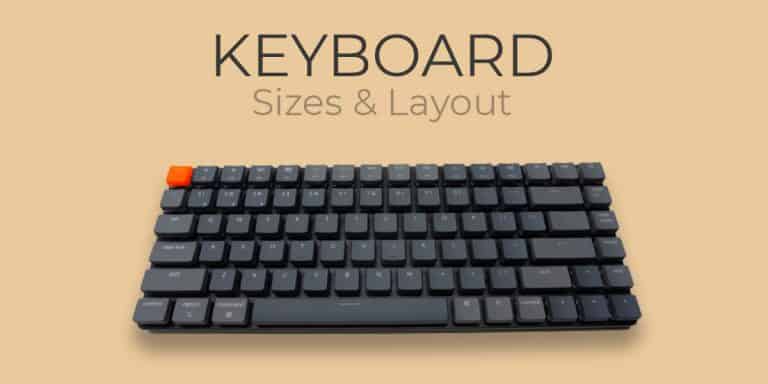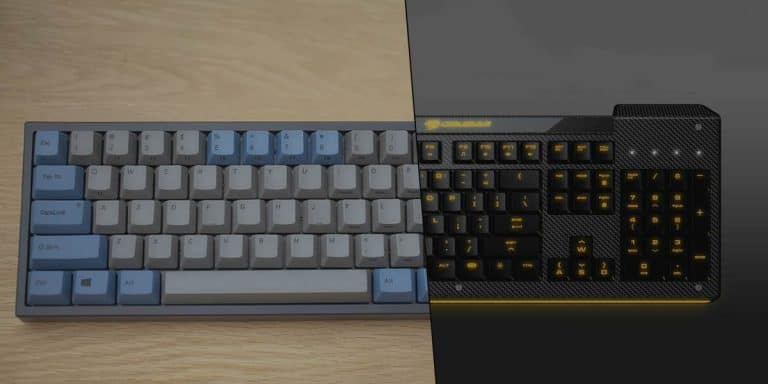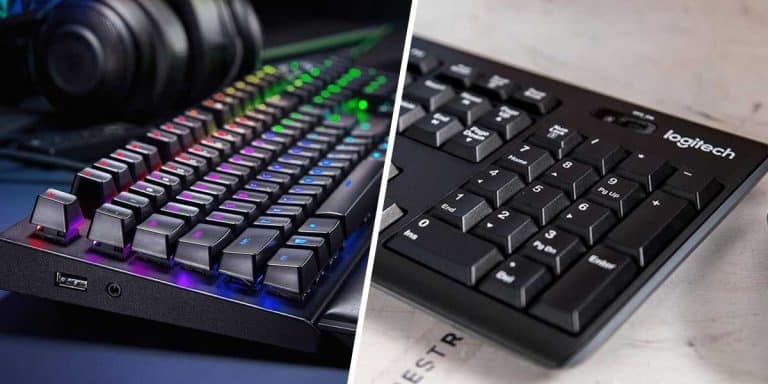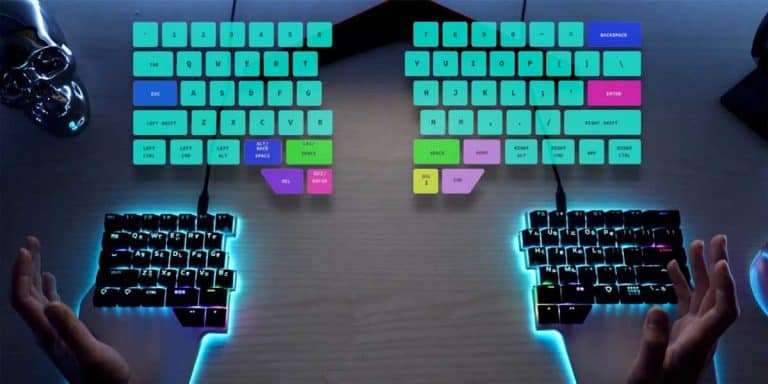ANSI VS ISO Keyboard – What Is The Difference?
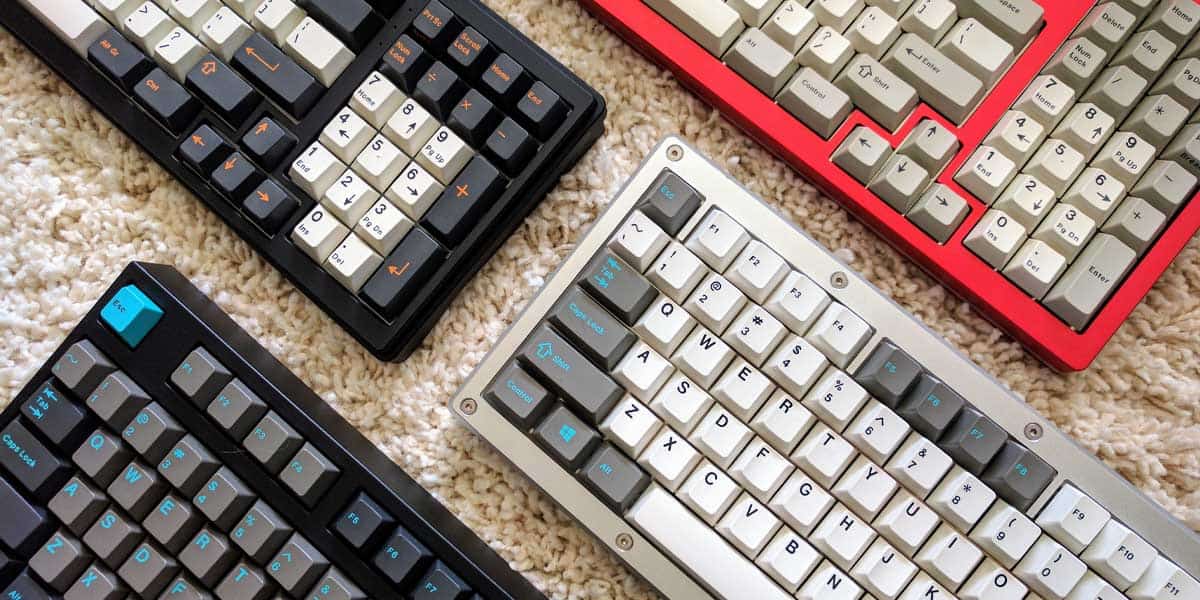
We all use keyboards for our individual needs, like typing and gaming. The way in which the physical, visual, and functional keys or legends are arranged is known as the keyboard layout. There are two types of keyboard layouts that are mainly used. Those are the ANSI Layout and the ISO layout. Most mechanical keyboard users do not know the difference between the ANSI and the ISO keyboard layout.
Both the ISO keyboard and the ANSI keyboard have distinct functionalities, but there are some specifications and functions that appear to be very similar, to the point where many people believe they are the same. In this article, we will compare ANSI vs ISO keyboard and will try to find the advantages and disadvantages.
What Is The ANSI Layout?
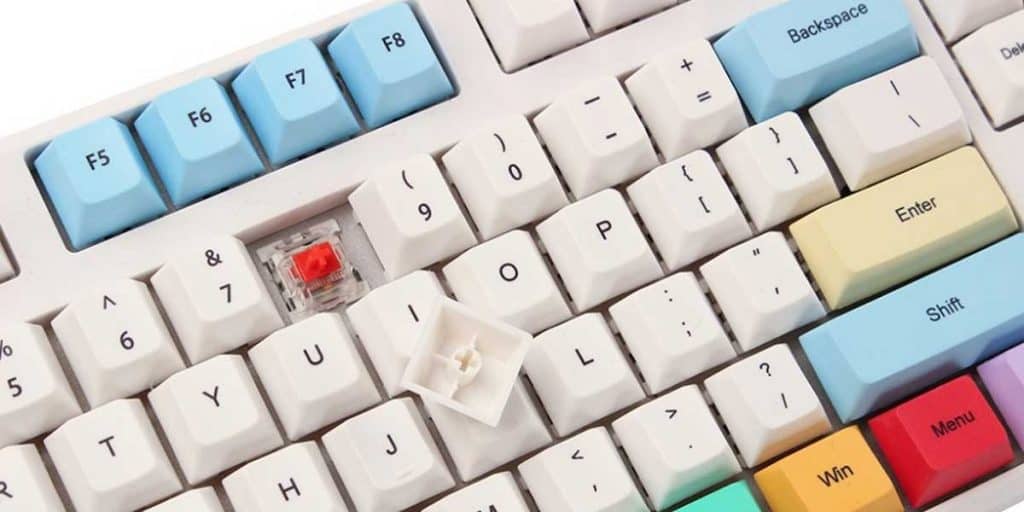
ANSI stands for American National Standards Institute. This layout was introduced by IBM and soon became the standard keyboard layout in the United States. The ANSI layout provides 104 keys for the standard ANSI keyboard size, and the design of this layout mostly focuses on English typing.
If we consider the Tenkeyless Keyboard design, then it comes with 87 keys. Because of the features and benefits, this layout provides a large-scale peripheral market of the United States; the ANSI layout is the most commonly used layout compared to any other layout.
ANSI Physical Layout Guide
The ANSI physical layout depends on the form factor, in which we consider the size of the “keyboard” and the total number of keys. The ANSI layout contains several form factors. For ANSI layouts, I will describe some common form factors.
I. Full Size 100%
There are 104 keys in total in the full-size ANSI keyboard. The alphanumeric, navigative, and pad clusters are horizontally separated, with the F keys in the upper row. Usually, the number pads are located to the right of the base shape. A full-size keyboard is the right choice if you have many numbers or calculations in your operations.
II. Tenkeyless
The Tenkeyless, also known as TKL, consists of a basic form factor. The form factor consists of all the clusters of keys in the full-size form factor mentioned above. The only difference is that this form factor does not include the number pad. It is smaller and provides more space and comfort for an ergonomic position. If you are a fan of the tenkeyless layout, look at out article “the best tenkeyless keyboard“.
III. 75%
The keyboards which have 70% to 75% width of the full-size keyboard are known as 75%. They keep the F keys row at the top, however. As these keyboards are small and portable, this makes these keyboards very popular.
PROS
- A large variety of ANSI keyboards are available.
- It does not require much movement to press the keys that are often used.
CONS
- For non-English users, this keyboard is not the best option.
- There is no additional key next to the left shift key.
What Is The ISO Layout?
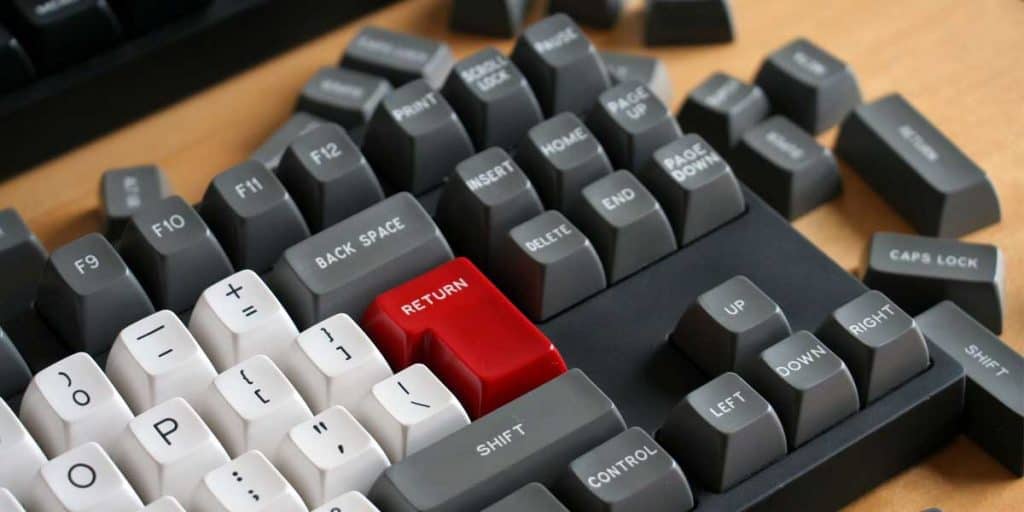
ISO stands for the International Organization for Standardization. This layout is very common in Europe. The Netherlands is an exception as ANSI is more popular there. In contrast with TKL, the ISO physical keyboard layout comes with up to 105 keys for full-sized keys, retaining 87 percent of the components.
In terms of shapes and arrangement, the physical layout of the ISO differs from that of the ANSI physical system, particularly the enter key, left shift key, backspace, right alt key, keycap compatibility, the number of keys, and the size of specific keys.
PROS
- This layout suits well for international languages.
- This layout provides an extra key for help.
CONS
- Even with the extra key, you have to stretch your fingers to press the frequently used keys.
- This keyboard layout is not used commonly.
- These keyboards are more expensive than the ANSI keyboards.
ANSI vs ISO Layout
| ANSI | ISO | |
| Enter Key | The Enter key on this keyboard is a broad rectangle. The majority of the time, this is seen on US keyboards. | The shape of the Enter key on this keyboard is L-shaped, up-side-down. |
| Backslash key | You have to stretch your fingers to reach the backslash key, as it is above the Enter key. | You do not have to stretch your finger to reach the backslash key as it is on the left of the Enter key. |
| Left Shift key | On this keyboard, the size of the Left Shift key is the same as the Right Shift key. | this keyboard, the size of the Left Shift key is the same as the Ctrl key and is 50% of the size of the Right Shift key. |
| Right Alt key | On this keyboard, the Left and Right Alt keys are the same. | On this board, the Right Alt key is replaced by the Alt Gr key. |
| Number of Keys | A full-sized keyboard has 104 keys, and for Tenkeyless, it has 87 keys. | A full-sized keyboard has 105 keys, and for Tenkeyless, it has 88 keys. |
| Commonality of keycap sets | This layout’s keycaps are fairly common. | This layout’s keycaps are uncommon. |
| Cost | These keyboards are cheaper than ISO keyboards. | These keyboards are more expensive than ANSI keyboards. |
1. Left Shift Key Size
When you compare ANSI to the ISO keyboard layouts, the primary difference you will witness is the left key shift position. In the ANSI layout, the position of the left shift key is above the Ctrl key, but depending on the keyboard, it is two units in size or one and a half. The Left Shift key is at the same place on the ISO layout as it is on the ANSI layout, taking only 1 unit, making it about the same size as the CTRL key.
You won’t have to stretch your fingers to reach the Left Shift key, which is one of the most common problems users face. The ISO layout provides users with an extra key, which can be helpful in some conditions.
2. Backspace Key Placement
The positioning of the backspace key, which writers and programmers frequently use, is another significant difference in its physical layout. The backspace is directly just above Enter Key in the ISO version of the keyboard layouts. The backspace key, however, is not right above the Enter key in the ANSI layout. Instead, the backslash key is driven up, which is aligned with the Enter key.
The positioning of this key is a massive subject among keyboard lovers, but it depends on you whether you like using the key at that position of the key or not.
3. Right Alt Keys
As mentioned above, you already know that between ISO keyboard layout and ANSI keyboard layout, ANSI layout is not suitable for other languages. Here you will get to know why. There is nothing excessive to do with the Right Alt Key if you are an ANSI layout keyboard user, and therefore, the key is not very popular in the community. But this is not the case with ISO layout users.
The Right Alt key is very useful for ISO layout keyboard users. The Right Alt key is known as the AltGr key. This key allows you to use the third symbol, and you can also communicate using this key.
4. Number Of Keys
When you compare ANSI to the ISO keyboard layout, you will know one of the distinctive differences between ANSI and ISO. This difference is the number of keys that both the keyboard layouts provide you. The ANSI keyboard layout consists of 104 keys, and the ISO keyboard layout has 105 keys for a full-sized keyboard.
The extra key provided by the ISO layout is beneficial and helps you communicate in various languages. The tenkeyless versions of the ANSI and ISO keyboard layouts provide 87 keys and 88 keys, respectively.
5. Enter Key Size
While comparing the ANSI keyboard layout and the ISO keyboard layout, one of the major differences is the size of the Enter Key. The ANSI keyboard layout provides a rectangular key of 1.5 units or 2 units. You will see a very different Enter key in the ISO Keyboard layout.
The Enter key in the ISO layout is a wide inverse L shape. When the size of the entry keys in both keyboard layouts is compared, the ISO keyboard layout has the larger enter key.
What Matters In A Physical Layout?
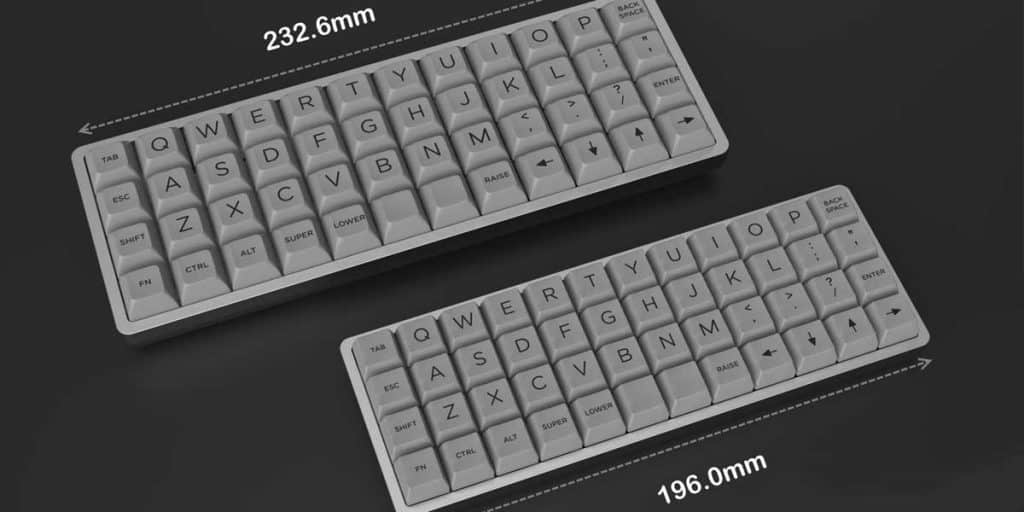
When you are about to choose a keyboard layout for yourself, the physical layout plays a very important role. The placement of the keys on most mechanical keyboards could very well help you determine how convenient and efficient you are while you are using the keyboard. This is why you should select a layout that complements your gaming and typing needs.
Form Factor
The size of the keyboard and the division of keys into groups or sections are called the form factor. There are various form factors, each with its own set of blocks or sections in which the keys are placed. The largest form factor consists of various blocks of keys and a central block known as the base form. Similarly, key blocks like number keys or function keys are clustered away from the basic form.
Classes Of Form Factor
There are several basic types of form factors. And your perfect keyboard will fall under one of these classes. The number of blocks on your keyboard will be used to categorize your keyboard within these classes. A block is a group of keys on your keyboard. The various form factors are compact, non-compact, terminal, and more. Now that we know the names of the form factor further.
I. Non-compact: Compared to other form factors, this is the largest form factor. This is the most important form factor. The base form and various key block clusters are included in this form factor, such as function keys, number keys, arrow keys, etc. Such keyboards are best suited for desktops and bigger laptops. They are bigger physically in size and contain the highest number of keys.
II. Compact: The keyboards included in this class of form factors have only the base form factor. Such keyboards are best suited for small laptops and mini keyboards.
III. Terminal: These keyboards are compact but have other keys on the terminals and are only counted as historical facts in different ways.
IV. Other: Depending on usage, there are various other factors. Most of them are used for gaming.
Verdict, Which Is Better ANSI Or ISO?
There is no proper answer to this question as the answer totally depends upon the usage type and the user. But by comparing the features and the difference between the ANSI keyboard layout and the ISO keyboard layout, we can form an idea of which one is better.
Both the keyboard layouts provide unique functionalities and features. ANSI provides 104 keys, and ISO provides 105 keys for a full-sized keyboard.
The number of keys will now be important depending on your needs. The extra keys provided by the ISO keyboard layout can be extremely useful, and it also allows you to communicate in multiple languages and use different symbols. ANSI keyboards will enable you to program each key according to your preferences. Now, this feature is beneficial for gamers.
One disadvantage of the ISO keyboard layout is that you have to stretch your fingers to reach specific keys which are frequently used, while this problem does not occur in the ANSI keyboard layout. When deciding between two products, the budget is very important.
ISO keyboards are less commonly used than ANSI keyboards, and they are also harder to find on the market. Because of this, the ISO keyboard layouts are more expensive than the ANSI keyboard layout. Now, again, it depends on your preference.
